Nail Clippers for Cats: The Best Options for Safe and Easy Grooming
If you’re a cat owner, you know that keeping your feline friend’s nails trimmed is an essential part of pet care. Untrimmed nails can lead to discomfort, pain, and even infection. But how do you know which nail clippers are the best for your cat’s needs? With so many options available, it can be overwhelming to choose.
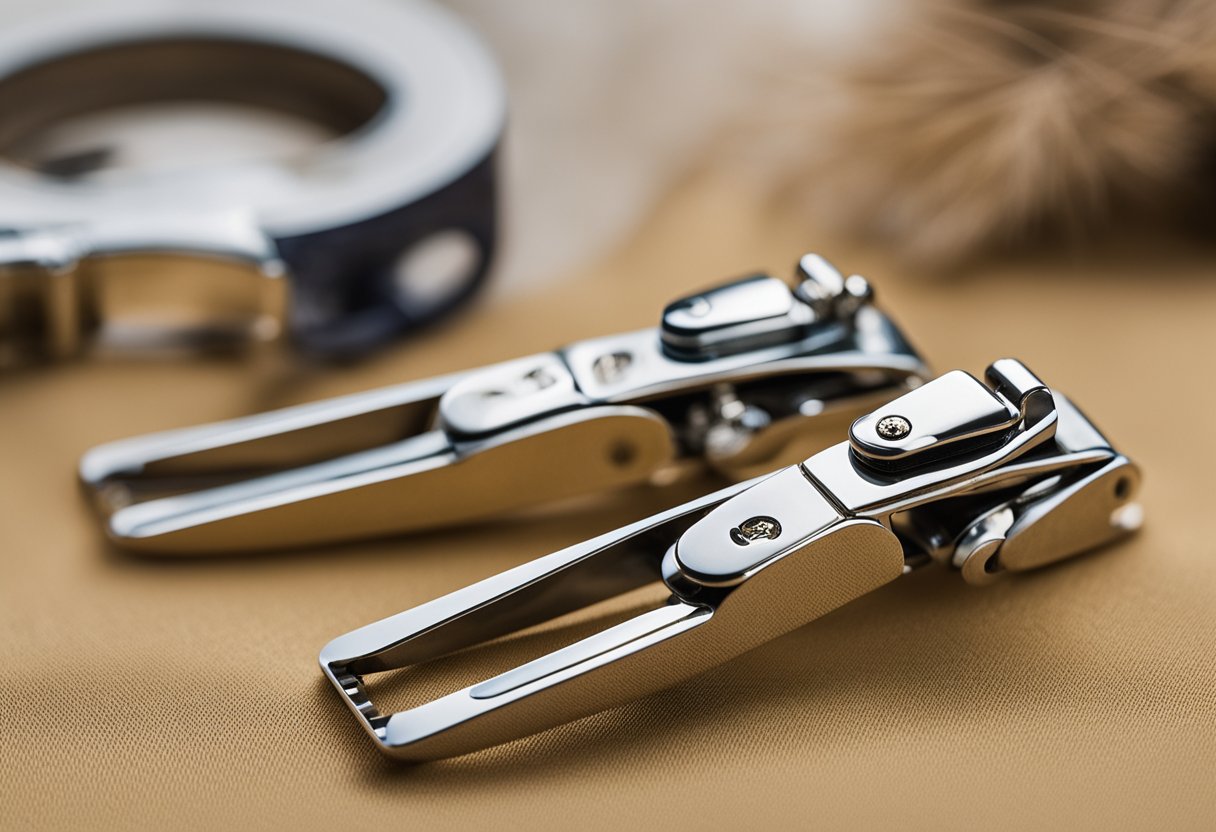
There are several types of nail clippers for cats, including guillotine, scissor, and grinder styles. Each has its own advantages and disadvantages, so it’s important to choose the right one for your cat’s personality and nail type. Some cats may prefer one style over another, and some may require a more gentle touch. Additionally, proper technique and preparation are crucial to a successful nail trimming session.
Key Takeaways
- Choosing the right nail clippers for your cat can make all the difference in ease and effectiveness.
- Preparing your cat and using proper technique are important for a successful nail trimming session.
- Regular nail trimming is vital to your cat’s health and wellbeing.
Importance of Proper Nail Care for Cats
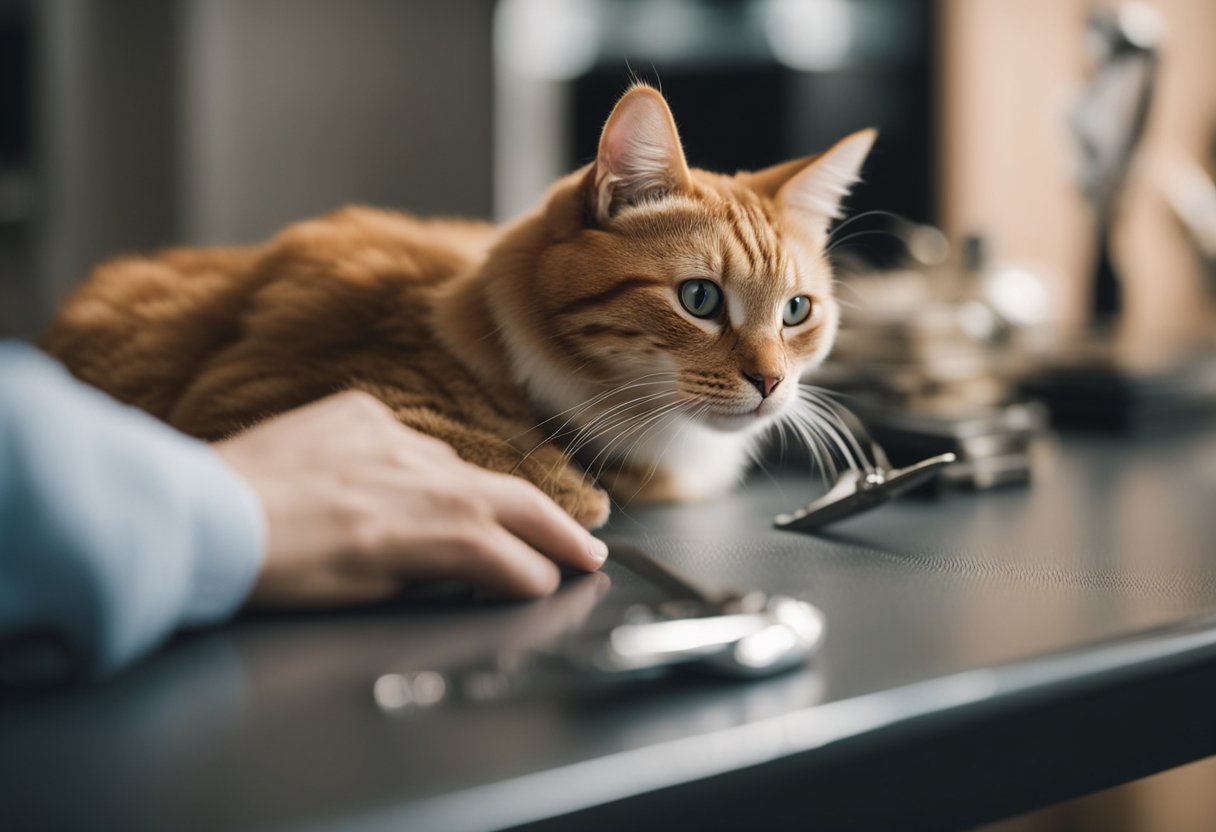
As a cat owner, it is important to understand the significance of proper nail care for your feline friend. Not only does trimming your cat’s nails prevent damage to household items and furniture, but it also promotes good hygiene and health for your cat.
When a cat’s nails get too long, they can become sharp and uncomfortable for your pet, leading to pain and discomfort. Long nails can also get caught in carpets, furniture, and other surfaces, leading to injury or even infection. Regular nail trimming can prevent these issues from occurring.
Moreover, long nails can also cause problems for you and your family. Sharp nails can scratch and hurt you or your loved ones, and even cause damage to clothing and other personal items. By keeping your cat’s nails trimmed, you can reduce the risk of injury to yourself and others.
In addition, proper nail care can also help prevent your cat from developing ingrown nails, which can be painful and lead to infection. Regular trimming can also prevent your cat from getting their nails caught in objects, which can cause them to break or even tear off.
Overall, proper nail care is essential for the health and well-being of your cat, as well as for your own safety and comfort. By investing in a good set of cat nail clippers and learning how to use them correctly, you can help keep your pet happy, healthy, and comfortable.
Types of Nail Clippers for Cats
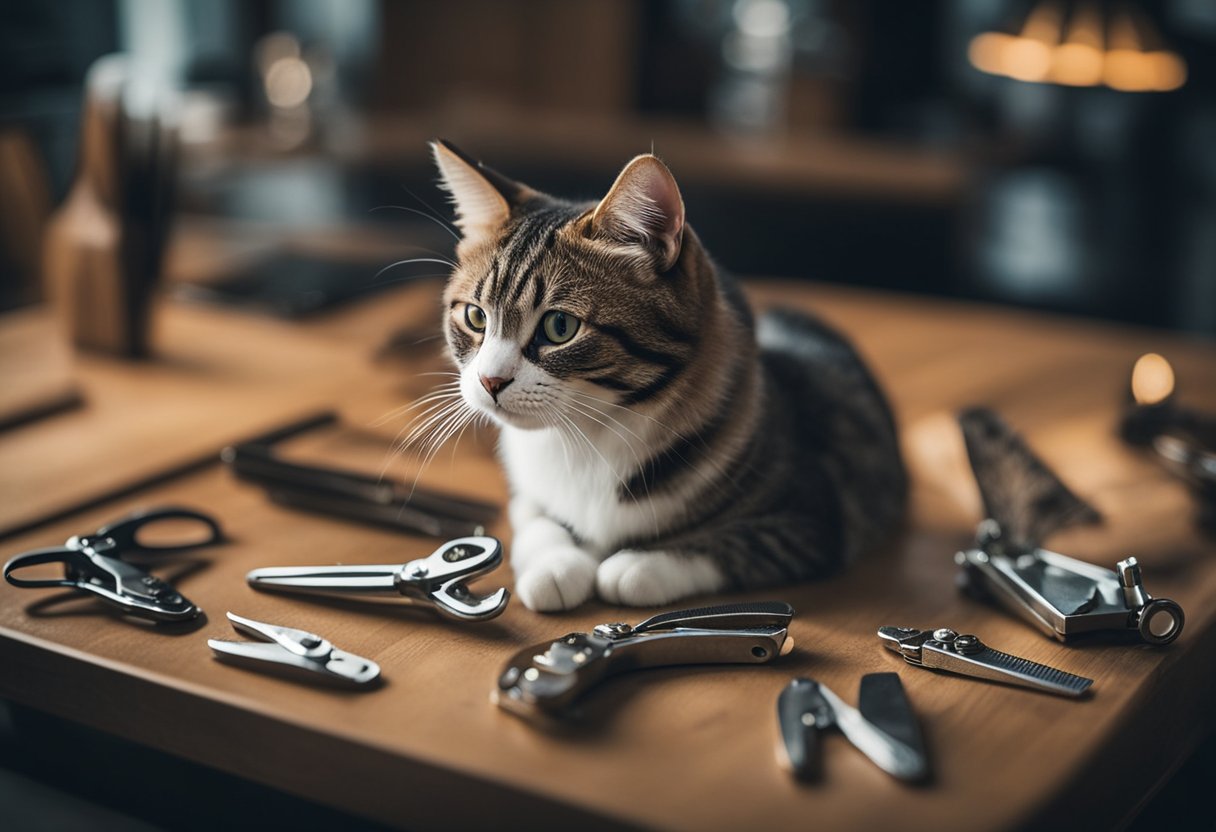
When it comes to grooming your cat’s nails, choosing the right type of nail clipper is crucial. There are three main types of nail clippers for cats: scissor clippers, guillotine clippers, and grinder tools. Each type has its own advantages and disadvantages.
Scissor Clippers
Scissor clippers are the most common type of nail clipper for cats. They are easy to use and come in a variety of sizes to fit your cat’s nails. Scissor clippers work by using a sharp blade to cut the nail. They are best for cats with small to medium-sized nails.
When using scissor clippers, it’s important to make sure the blade is sharp. Dull blades can crush the nail, causing pain and discomfort for your cat. Additionally, scissor clippers can be difficult to use on cats with very thick nails.
Guillotine Clippers
Guillotine clippers work by using a small hole to guide the nail into a cutting blade. When the handles are squeezed, the blade cuts through the nail. Guillotine clippers are best for cats with small to medium-sized nails.
One advantage of guillotine clippers is that they are less likely to crush the nail than scissor clippers. However, it can be difficult to see where the blade is cutting, which can make it difficult to avoid cutting the quick.
Grinder Tools
Grinder tools use a rotating sanding disc to grind down the nail instead of cutting it. They are best for cats with thick nails or cats who are afraid of clippers.
One advantage of grinder tools is that they are less likely to cause pain or discomfort for your cat. However, they can be noisy and take longer to use than clippers. Additionally, they require more maintenance than other types of nail clippers.
In summary, choosing the right type of nail clipper for your cat depends on their individual needs. Scissor clippers are easy to use and work well for cats with small to medium-sized nails. Guillotine clippers are less likely to crush the nail, but can be difficult to see where the blade is cutting. Grinder tools are best for cats with thick nails or cats who are afraid of clippers, but can be noisy and require more maintenance.
How to Choose the Right Nail Clippers
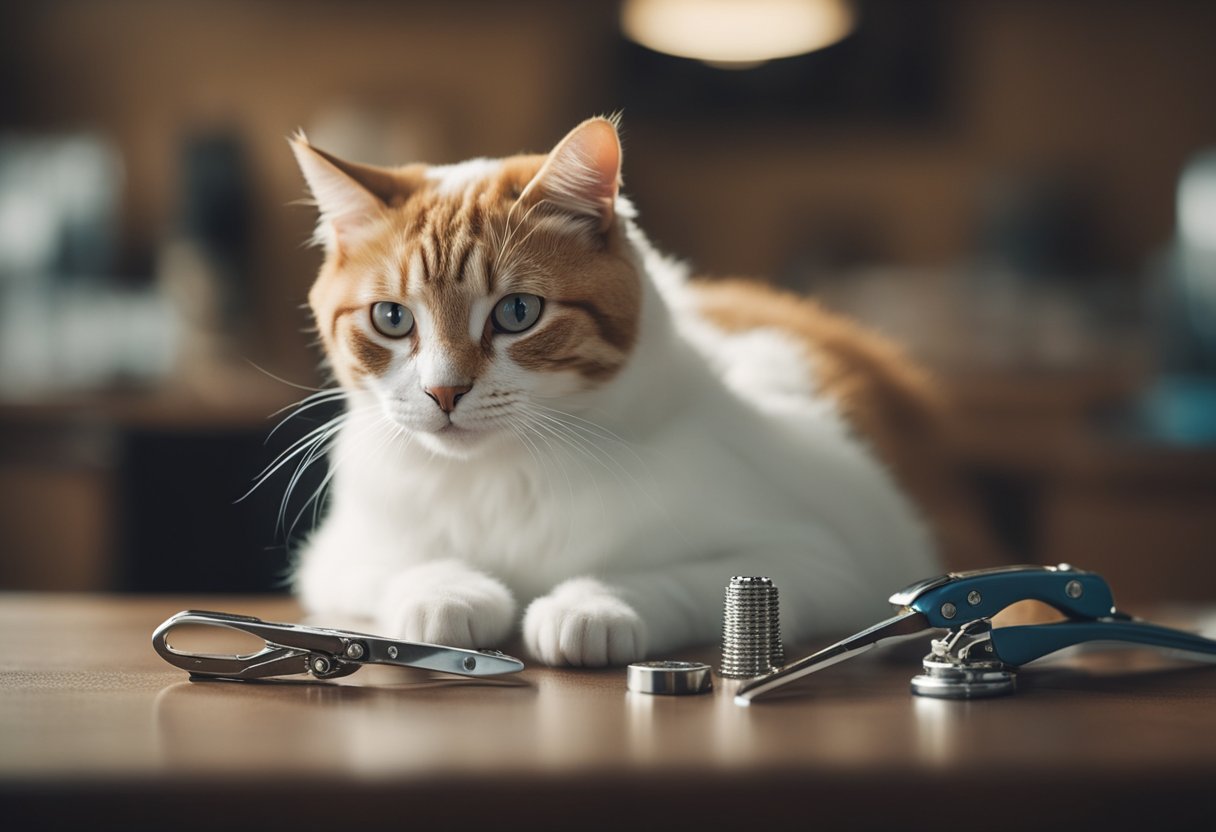
When it comes to choosing the right nail clippers for your cat, there are several factors to consider. Here are some important things to keep in mind:
Size and Comfort
First and foremost, you want to make sure that the nail clippers you choose are the right size for your cat. Look for clippers that are specifically designed for cats, as these will be smaller and easier to handle. Additionally, you want to make sure that the clippers are comfortable for both you and your cat to use. Look for clippers with ergonomic handles that are easy to grip, and consider the weight of the clippers as well.
Safety Features
Safety is key when it comes to clipping your cat’s nails. Look for clippers with safety features such as a locking mechanism that prevents the clippers from accidentally closing too far and cutting into the quick of the nail. Some clippers also come with a safety guard that helps you avoid cutting too much of the nail at once.
Durability and Material
You want to make sure that the nail clippers you choose are durable and made from high-quality materials. Look for clippers with stainless steel blades that will stay sharp over time, and consider the overall construction of the clippers as well. Some clippers are made from plastic while others are made from metal, so consider which material will be best for your needs.
Overall, choosing the right nail clippers for your cat is an important decision. By considering factors such as size, comfort, safety features, and durability, you can find a pair of clippers that will make nail trimming a breeze.
Preparing Your Cat for Nail Trimming

Trimming your cat’s nails can be a stressful experience for both you and your feline friend. However, with the right preparation, you can make the process more comfortable and less intimidating for your cat. Here are some tips to help you prepare your cat for nail trimming.
Handling Paws
Before you start trimming your cat’s nails, it is essential to get them used to having their paws handled. Start by gently touching your cat’s paws while you are petting them. Gradually increase the amount of time you spend touching their paws until they are comfortable with it. Once your cat is comfortable with having their paws touched, you can move on to the next step.
Positive Reinforcement
Positive reinforcement is an effective way to help your cat associate nail trimming with a positive experience. You can use treats, praise, or toys to reward your cat for good behavior during nail trimming. For example, you can give your cat a treat after each nail is trimmed. This will help them associate nail trimming with a positive experience.
Creating a Calm Environment
Creating a calm environment is essential for a successful nail trimming session. Find a quiet, well-lit room where your cat feels comfortable. You can play soothing music or use pheromone sprays to help your cat relax. It is also important to choose a time when your cat is relaxed, such as after a nap or a meal.
In summary, preparing your cat for nail trimming involves getting them used to having their paws handled, using positive reinforcement, and creating a calm environment. By following these tips, you can make the nail trimming process more comfortable and less stressful for your feline friend.
Step-by-Step Guide to Trimming Cat Nails
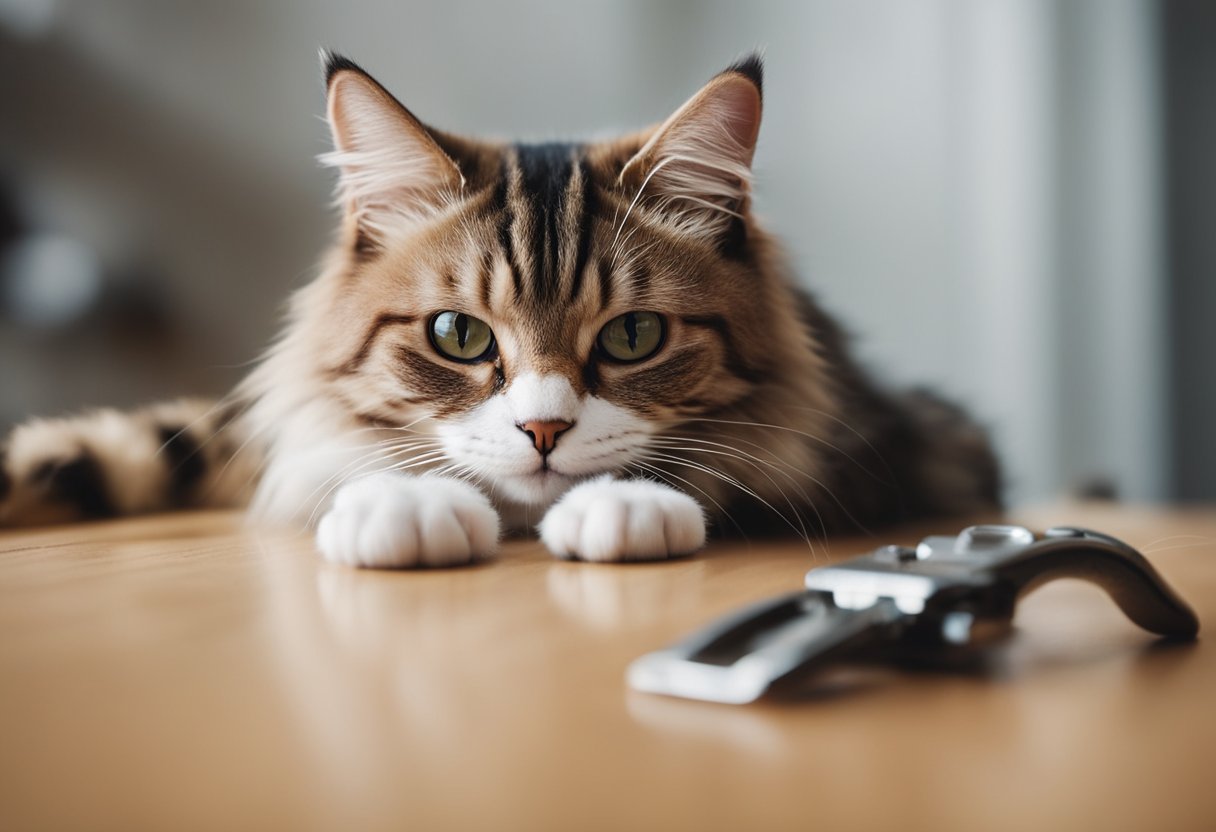
Trimming your cat’s nails can be a daunting task, but it’s an important part of their grooming routine. Here’s a step-by-step guide to help you trim your cat’s nails safely and effectively.
Holding Your Cat Properly
Before you start trimming your cat’s nails, it’s important to hold them properly to avoid injury. One way to do this is to wrap your cat in a towel, leaving only their paw exposed. Another way is to have someone hold your cat while you trim their nails.
Identifying the Quick
The quick is the pink part of your cat’s nail that contains blood vessels and nerves. It’s important to avoid cutting the quick while trimming your cat’s nails as it can cause bleeding and pain. To identify the quick, shine a flashlight on your cat’s nail. You should be able to see the pinkish area.
Cutting Technique
Once you have identified the quick, you can start trimming your cat’s nails. Use a pair of nail clippers designed for cats and make sure they are sharp. Hold your cat’s paw firmly and gently squeeze to extend the nail. Place the clippers about 2mm away from the quick and cut the nail in one swift motion.
If you accidentally cut the quick and your cat’s nail starts bleeding, don’t panic. Apply pressure to the nail with a clean cloth or tissue for a few minutes until the bleeding stops. You can also use a styptic powder or pencil to help stop the bleeding.
Remember to reward your cat with treats and praise after each nail is trimmed to make the experience more positive. With practice and patience, you’ll become more confident in trimming your cat’s nails.
Aftercare and Monitoring
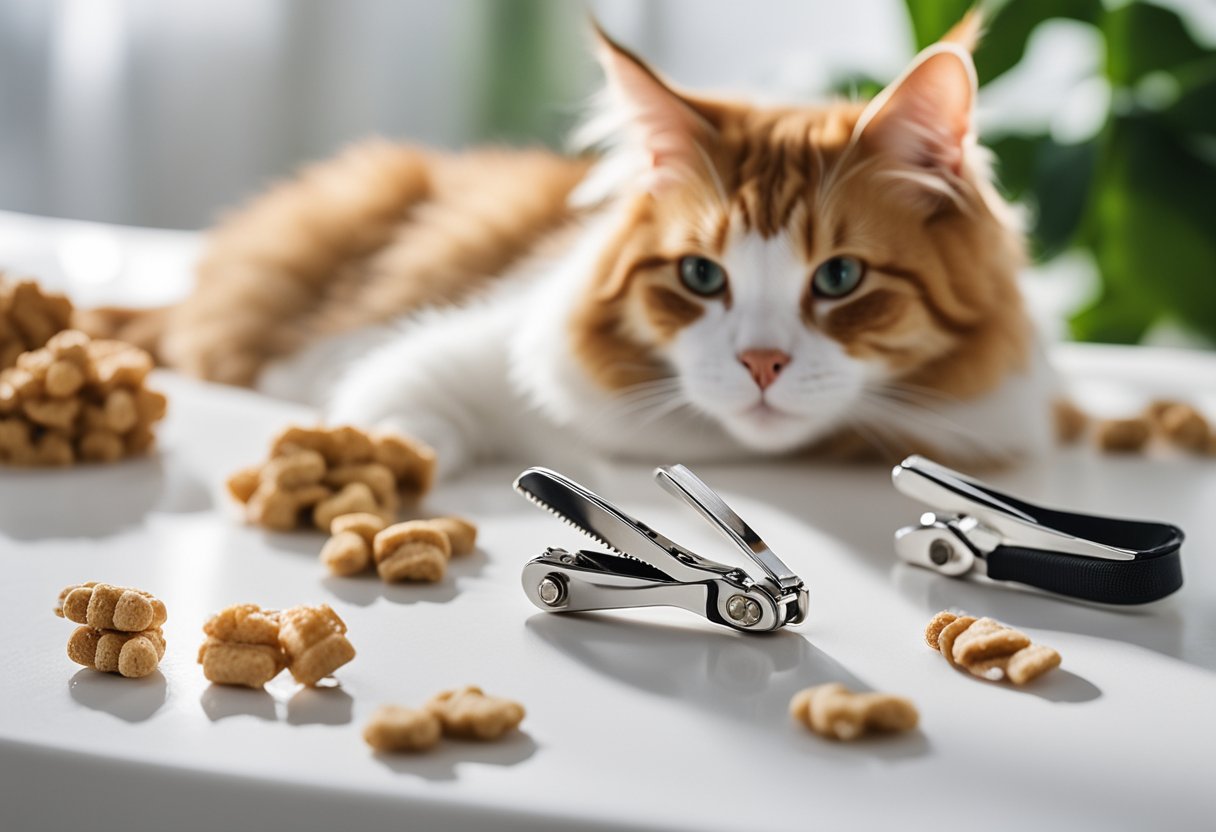
After trimming your cat’s nails, it’s important to inspect them for any signs of damage or bleeding. This will help you catch any issues early on and prevent further injury. Here are some post-trimming inspection tips to keep in mind:
Post-Trimming Inspection
- Check for any bleeding: If you accidentally cut the quick, you may notice some bleeding. Use a clean cloth to apply pressure to the nail to stop the bleeding. If the bleeding doesn’t stop after a few minutes, or if your cat seems to be in pain, contact your veterinarian for assistance.
- Look for signs of infection: If you notice any redness, swelling, or discharge around the nail, your cat may have an infection. Contact your veterinarian for advice on how to treat it.
- Monitor your cat’s behavior: If your cat seems to be in pain or is limping after the trimming, it may be a sign of injury. Keep an eye on your cat’s behavior and contact your veterinarian if you notice any changes.
Treating Accidental Cuts
If you accidentally cut the quick, there are a few things you can do to help treat the injury:
- Apply pressure: Use a clean cloth to apply pressure to the nail to stop the bleeding.
- Use styptic powder or cornstarch: Applying styptic powder or cornstarch to the bleeding nail can help it clot and stop bleeding.
- Monitor your cat: Keep an eye on your cat’s behavior and contact your veterinarian if you notice any signs of pain or discomfort.
Remember, it’s always better to be safe than sorry. If you’re unsure about how to trim your cat’s nails or if you notice any signs of injury or infection, contact your veterinarian for advice.
Maintaining Nail Clippers for Longevity

Keeping your cat’s nail clippers in good condition is essential for longevity and performance. Here are some tips to help you maintain your cat’s nail clippers for long-lasting use.
Cleaning Clippers
Regular cleaning of your cat’s nail clippers is crucial to prevent the spread of germs and bacteria. After each use, wipe the blades with a clean cloth or tissue to remove any debris or nail dust. You can use a small brush to remove any stubborn debris that may be stuck in the blades.
If your cat’s nail clippers are particularly dirty, you can use a disinfectant solution to clean them. Mix equal parts of water and vinegar or hydrogen peroxide and soak the blades for a few minutes before wiping them dry. Avoid using harsh chemicals or bleach, as they can damage the blades and cause them to rust.
Regular Sharpening
Dull blades can cause discomfort and pain to your cat, as well as make it difficult to cut their nails. Regular sharpening of your cat’s nail clippers is necessary to keep them in good condition. You can use a sharpening stone or a nail file to sharpen the blades.
To sharpen the blades, hold the clippers firmly and run the sharpening stone or file along the blade’s edge in a circular motion. Repeat the process until the blade is sharp enough to cut through your cat’s nails easily. Be careful not to over-sharpen, as this can cause the blades to become too thin and weak.
By following these simple tips, you can keep your cat’s nail clippers in good condition and ensure that they last for a long time. Remember to clean your clippers after each use and sharpen them regularly to maintain their performance.
Professional Nail Trimming Services
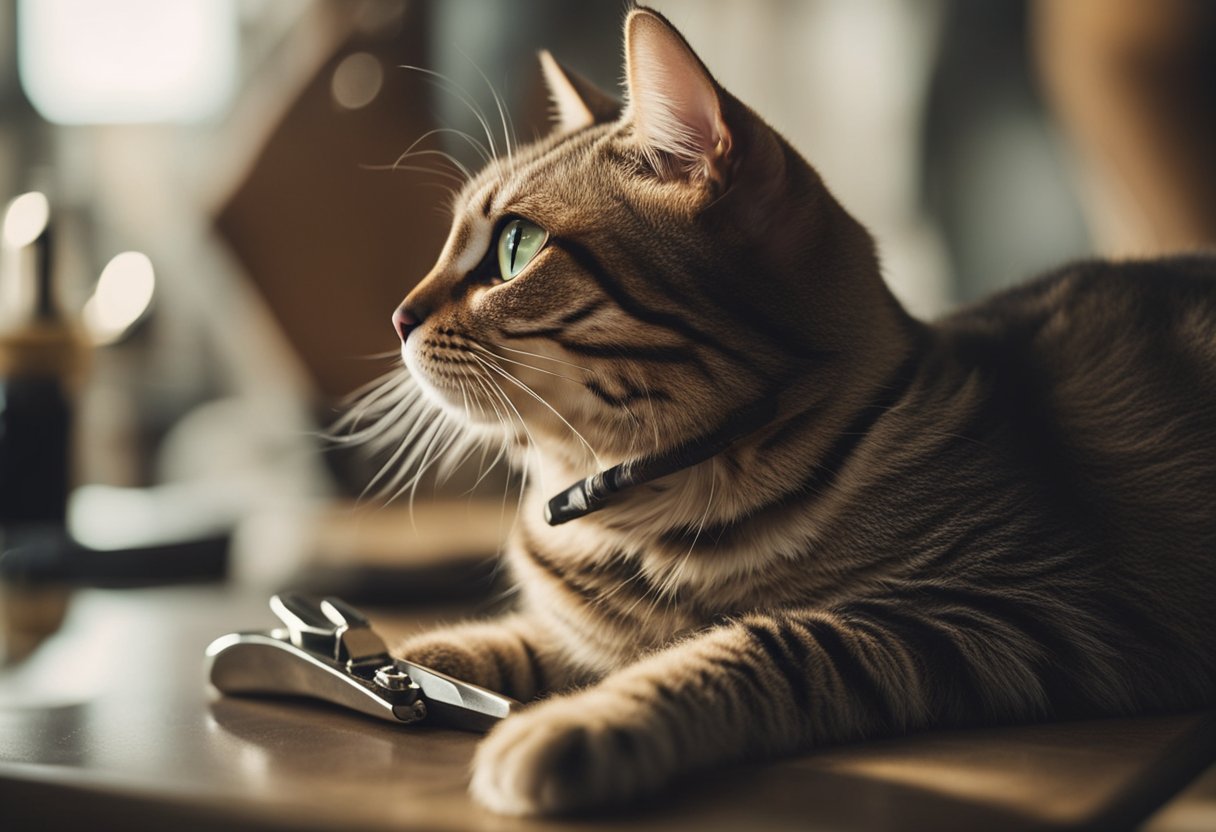
If you feel uncomfortable trimming your cat’s nails, or if your cat is particularly resistant to nail trimming, you may consider taking them to a professional nail trimming service. These services are typically offered by groomers, veterinarians, and some pet stores.
Professional nail trimming services can be a good option if you are unsure about the proper technique for trimming your cat’s nails or if your cat is particularly skittish or aggressive. A professional groomer or veterinarian will have experience handling cats and can safely and efficiently trim your cat’s nails.
When choosing a professional nail trimming service, it’s important to do your research and choose a reputable provider. Look for a provider with experience handling cats and a good reputation in the community. You may also want to ask for recommendations from other cat owners or check online reviews.
Keep in mind that professional nail trimming services may be more expensive than trimming your cat’s nails at home. However, the peace of mind and safety that come with a professional service may be worth the extra cost.
Overall, professional nail trimming services can be a good option for cat owners who are uncomfortable or inexperienced with trimming their cat’s nails. Just be sure to do your research and choose a reputable provider.
When to Replace Nail Clippers
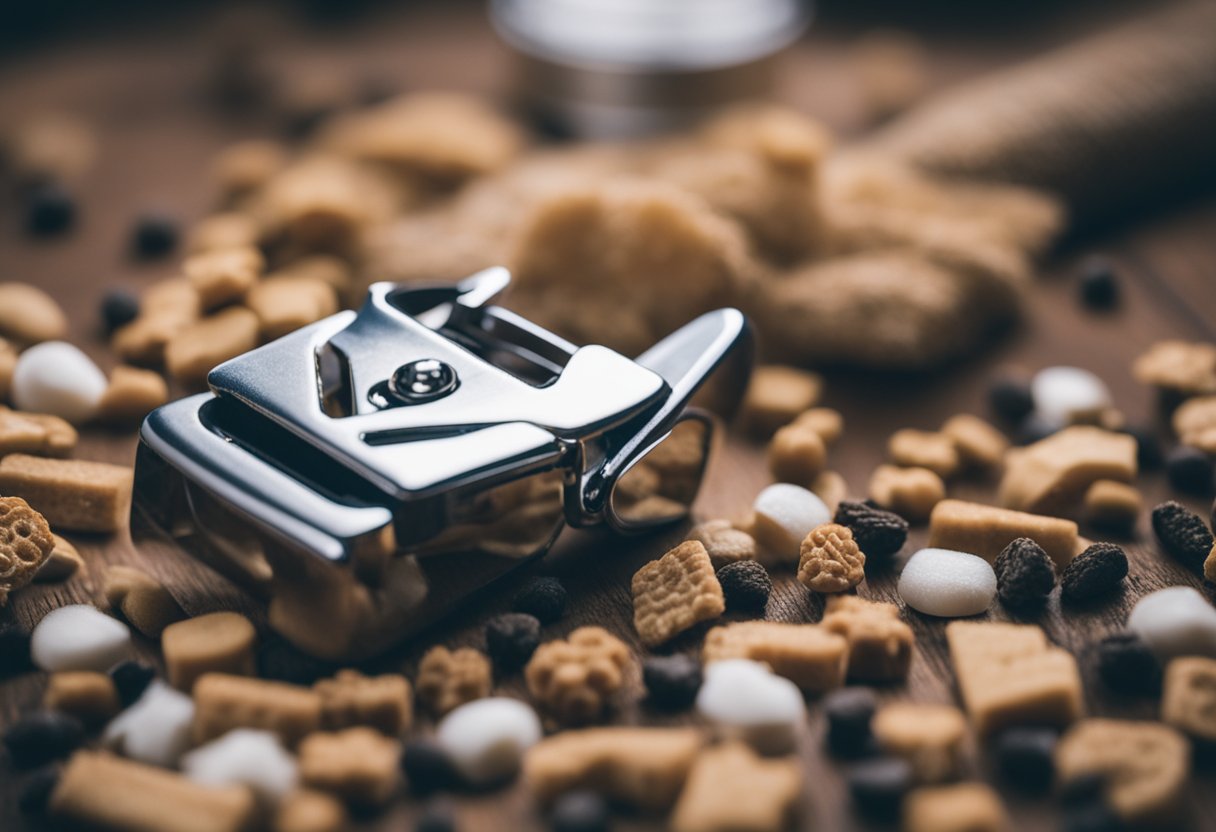
Nail clippers are an essential tool for any cat owner. They help keep your cat’s nails trimmed and healthy. However, like any tool, nail clippers can wear out over time. So, how do you know when it’s time to replace your cat’s nail clippers?
Here are some signs that it’s time to replace your cat’s nail clippers:
- Dull blades: If your cat’s nail clippers are not cutting through their nails as easily as before, it could be a sign that the blades are becoming dull. Dull blades can cause your cat’s nails to split or fray, which can be painful for them.
- Rust or corrosion: If you notice any rust or corrosion on your cat’s nail clippers, it’s time to replace them. Rust and corrosion can cause the blades to become weak and brittle, which can be dangerous for your cat.
- Broken or loose parts: If any part of your cat’s nail clippers is broken or loose, it’s time to replace them. Broken or loose parts can cause the nail clippers to malfunction, which can be dangerous for your cat.
- Discomfort or pain: If your cat seems uncomfortable or in pain when you use their nail clippers, it could be a sign that they need to be replaced. Discomfort or pain can be caused by dull blades or other issues with the nail clippers.
In general, it’s a good idea to replace your cat’s nail clippers every six months to a year, depending on how often you use them. By keeping an eye out for these signs, you can ensure that your cat’s nail clippers are always in good condition and that your cat is comfortable during nail trimming sessions.
Resources
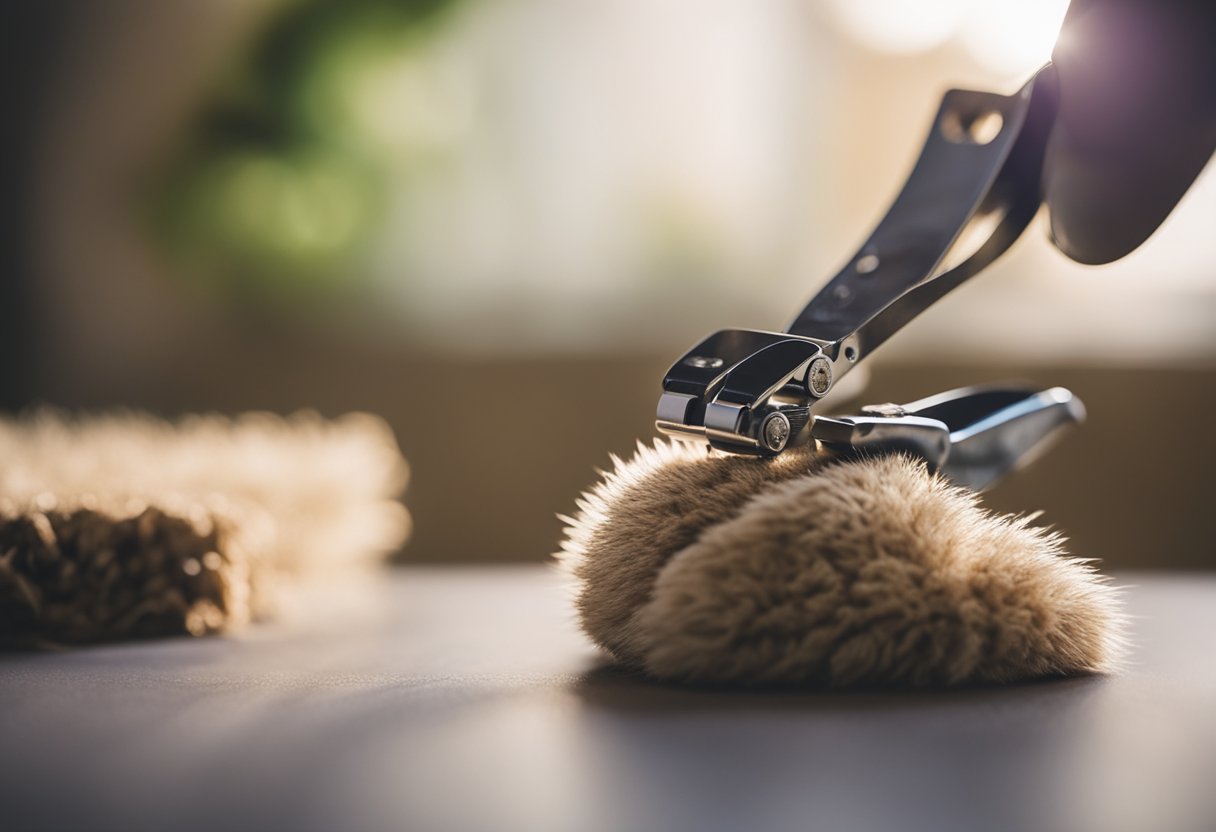
When it comes to finding the best nail clippers for your furry friend, there are a variety of resources available to help you make an informed decision. Here are a few resources to consider:
1. Online Reviews
One of the best resources for finding the right nail clippers for your cat is online reviews. Websites like The Spruce Pets, Cats.com, and Feline Living offer detailed reviews of the top nail clippers on the market. These reviews can help you narrow down your choices and find the right pair of clippers for your cat.
2. Veterinarians
Your veterinarian can also be a valuable resource when it comes to choosing the right nail clippers for your cat. They can provide recommendations based on your cat’s breed, size, and temperament. Additionally, they can show you the proper technique for trimming your cat’s nails to ensure that you do not accidentally cut the quick.
3. Pet Stores
Pet stores are another great resource for finding cat nail clippers. Many pet stores have a wide selection of clippers to choose from, and their staff can provide advice and guidance on which clippers are best for your cat. They can also demonstrate how to use the clippers properly.
4. Online Retailers
Online retailers like Amazon and Chewy also offer a wide selection of cat nail clippers. These retailers often have detailed product descriptions and customer reviews to help you make an informed decision. Plus, many online retailers offer fast and affordable shipping, making it easy to get the clippers you need delivered right to your door.
By utilizing these resources, you can find the perfect nail clippers for your cat and ensure that their nails stay healthy and trimmed.
Conclusion
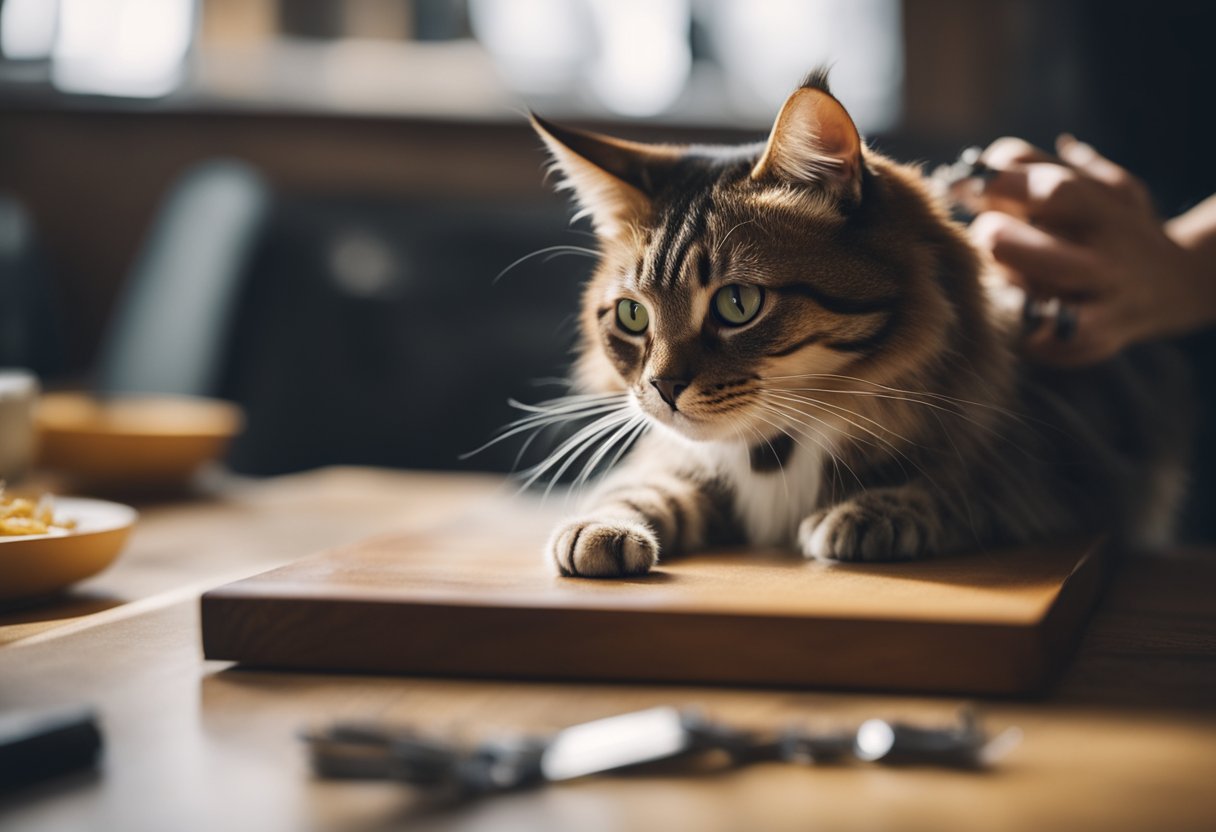
By now, you should have a good understanding of the different types of cat nail clippers available on the market and how to use them. Remember to choose a clipper that suits your cat’s needs and personality, and to follow the correct procedures when clipping their nails.
If you have a cat that is particularly skittish or anxious, you may want to consider using a nail grinder instead of clippers. A nail grinder uses a rotating file to gradually grind down the nail, which can be less stressful for your cat than the sudden snip of a clipper.
No matter which type of clipper or grinder you choose, always make sure to use sharp blades or files. Dull blades can crush the nail, causing pain and discomfort for your cat.
Lastly, don’t forget to reward your cat for good behavior during the clipping process. Treats, praise, and playtime can all help to make nail clipping a positive experience for both you and your feline friend.
Frequently Asked Questions
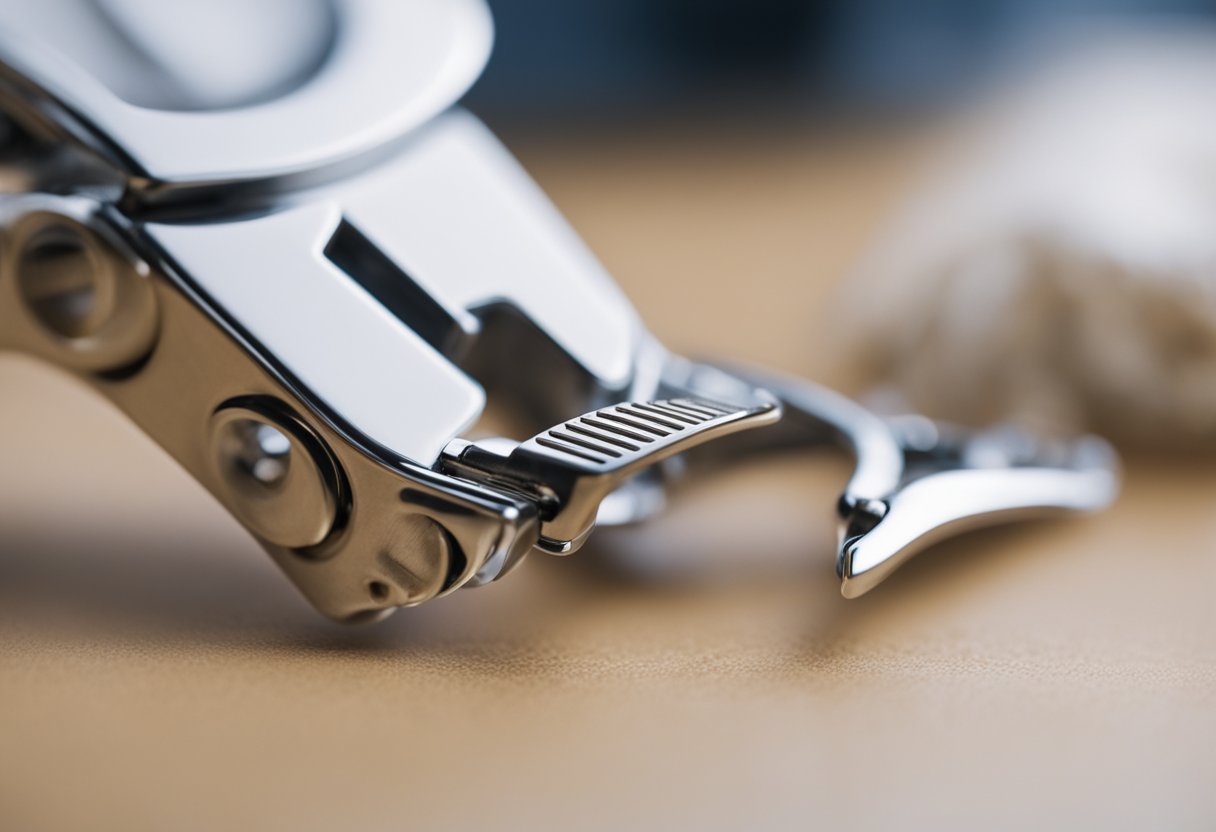
How do I safely trim my cat’s nails?
To safely trim your cat’s nails, you should use proper cat nail clippers and follow a few simple steps. First, make sure your cat is comfortable and relaxed. You can do this by petting and talking to your cat before you start. Then, gently hold your cat’s paw and use the clippers to trim the tip of the nail, being careful not to cut the quick, which is the pink part of the nail that contains blood vessels and nerves. If your cat has dark nails and you can’t see the quick, trim just a small amount at a time until you see a black dot in the center of the nail. This indicates that you are getting close to the quick, and you should stop trimming.
What features should I look for in cat nail clippers?
When choosing cat nail clippers, there are a few features to look for. First, make sure the clippers are the right size for your cat’s nails. You don’t want to use clippers that are too big or too small, as this can make the trimming process more difficult. Second, look for clippers with sharp blades that will make a clean cut without crushing the nail. Third, consider clippers with a safety mechanism that will prevent you from cutting the quick. Fourth, ergonomic handles can make it easier to grip the clippers and reduce hand fatigue.
Are there any recommended brands for cat nail clippers?
There are several brands of cat nail clippers that are recommended by veterinarians and cat owners. Some popular brands include Epica, Resco, and Shiny Pet. These brands offer different types of clippers, such as guillotine-style and scissor-style, as well as different sizes and features. It’s important to choose a brand that has good reviews and a reputation for quality.
Can I use human nail clippers on my cat?
No, you should not use human nail clippers on your cat. Human nail clippers are not designed for cat nails and may crush or split the nail. This can be painful for your cat and may lead to infection. Cat nail clippers are specifically designed to make a clean cut without damaging the nail.
How often should I clip my cat’s nails?
The frequency of nail clipping depends on your cat’s lifestyle and individual needs. Indoor cats may need their nails clipped less often than outdoor cats who use their claws more frequently. As a general rule, you should aim to trim your cat’s nails every 2-4 weeks. However, if you notice that your cat’s nails are getting too long or are starting to curl, it’s time for a trim.
Is it better to cut or grind cat nails?
Both cutting and grinding can be effective ways to trim your cat’s nails. Cutting with clippers is a quick and easy method that can be done at home. Grinding with a rotary tool or Dremel can be a good option for cats who are afraid of clippers or have very thick nails. However, grinding can be more time-consuming and may require more skill to avoid injuring the quick. Ultimately, the method you choose depends on your cat’s individual needs and what works best for you.
People Also Ask
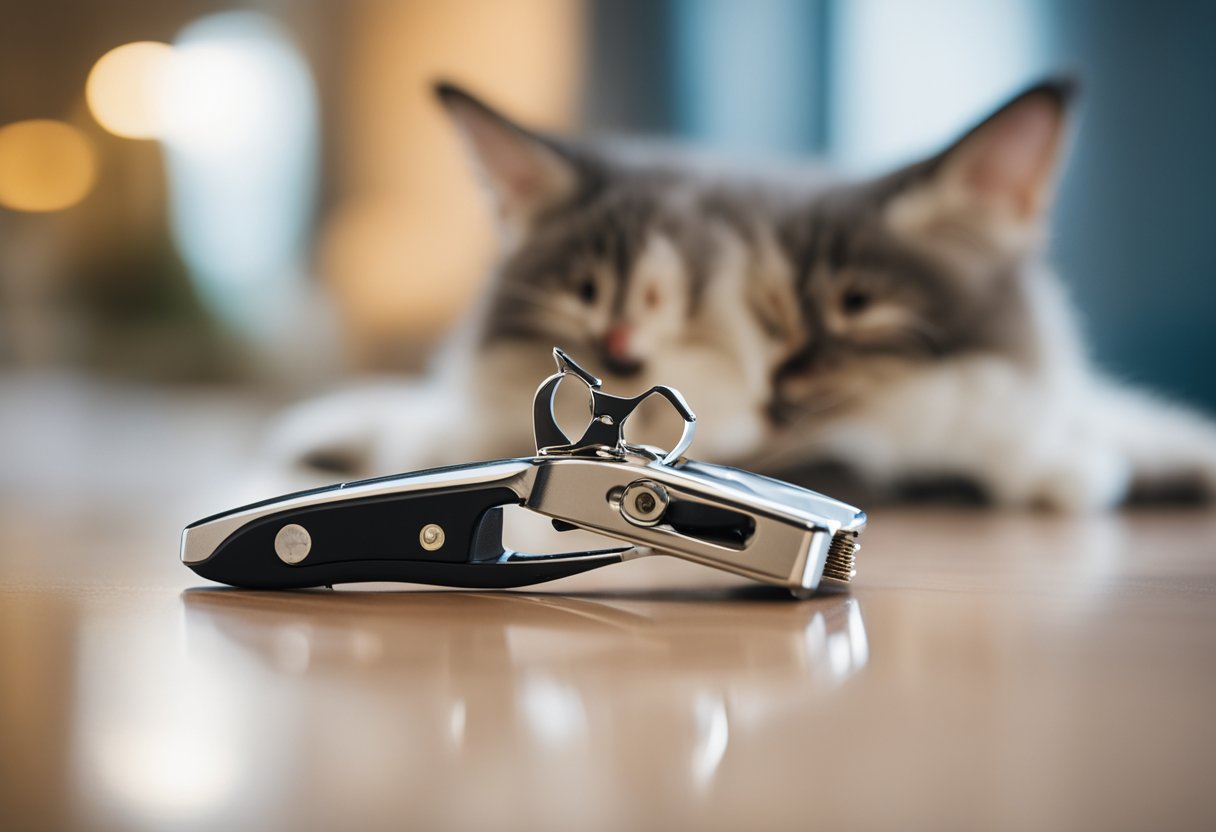
If you’re a cat owner, you probably know that keeping your cat’s nails trimmed is essential for their health and safety. However, choosing the right nail clippers for your cat can be a daunting task. Here are some common questions people ask about cat nail clippers:
Can I Use Human Nail Clippers on My Cat?
No, you should not use human nail clippers on your cat. Human nail clippers are not designed for cat nails, which are much thinner and sharper than human nails. Using human nail clippers can cause your cat’s nails to split or fracture, which can be painful and lead to infection.
What Are the Best Nail Clippers for Cats?
There are many different types of nail clippers for cats, but the best ones are those that are specifically designed for cats. The most common types of cat nail clippers are guillotine clippers, scissor clippers, and plier clippers.
Guillotine clippers have a hole where you insert your cat’s nail, and a blade that slides across to cut the nail. Scissor clippers look like tiny scissors, and you use them to cut the nail from the side. Plier clippers work like a pair of pliers, and you use them to cut the nail from the top.
Some of the best cat nail clippers on the market include Resco, Epica, and JW Pet. Resco nail clippers are made of high-quality materials and come with a lifetime warranty. Epica nail clippers are easy to use and have ergonomic handles. JW Pet nail clippers are affordable and come in a variety of sizes.
How Do I Choose Cat Nail Clippers?
When choosing cat nail clippers, there are a few things to keep in mind. First, make sure the clippers are the right size for your cat’s nails. If the clippers are too small, they won’t be able to cut through the nail. If they’re too big, they can cause your cat discomfort.
Second, consider the type of nail clippers that will work best for you and your cat. Guillotine clippers are best for cats with small nails, while scissor clippers are better for cats with larger nails. Plier clippers are a good choice for cats with thick nails.
Finally, look for nail clippers that are made of high-quality materials and are easy to use. You want clippers that will last a long time and won’t break or rust easily.
Is Nail Clipping Painful for Cats?
Nail clipping should not be painful for cats if done correctly. However, some cats may be nervous or scared during the process, which can make them more sensitive to pain. To make the process less stressful for your cat, try to clip their nails when they’re relaxed and calm. You can also give them treats or toys to distract them during the process.
If you’re unsure about how to clip your cat’s nails, it’s best to consult with a veterinarian or a professional groomer. They can show you the proper technique and give you tips on how to make the process as painless as possible for your cat.
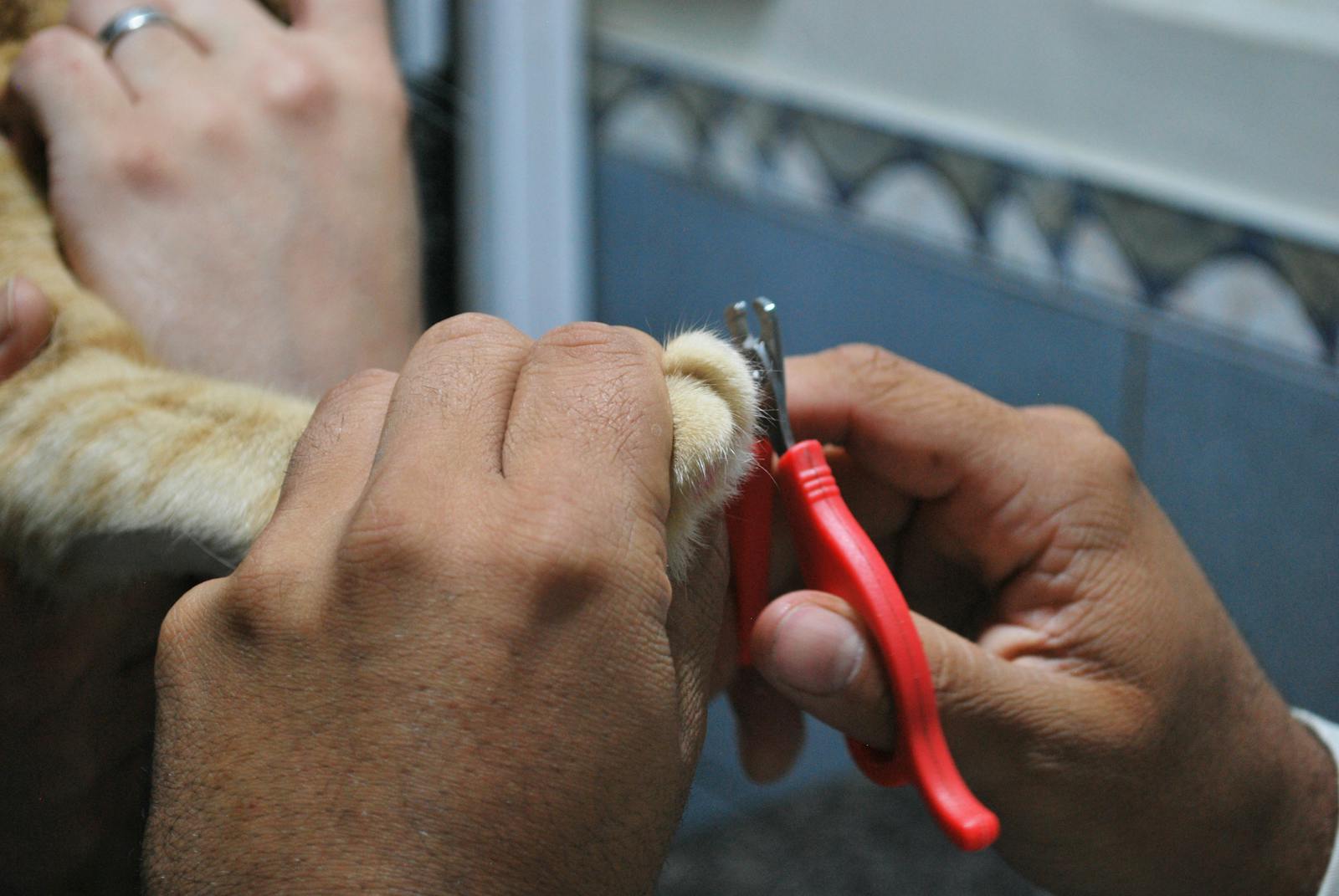
This is an amazing page. The outstanding information reveals the owner’s accountability. I’m in awe and eagerly await more amazing postings like this one.
thank you
Cat nails serve several important functions for your feline friend:
Defense and Hunting: Cat nails are their primary defense mechanism. In the wild, cats use their nails for hunting prey and defending themselves against predators.
Grooming: Cats use their nails for grooming. They lick their nails and use them to remove loose fur and dirt from their coats.
Climbing: Cats’ retractable claws help them climb trees and other surfaces. Their sharp nails provide traction, allowing them to climb vertically with ease.
Marking Territory: Scratching is a natural behavior for cats, and it helps them mark their territory. When they scratch objects, they leave both a visual mark and a scent from glands in their paws.
As a pet owner, you can help maintain your cat’s nails by providing scratching posts or pads to satisfy their natural urge to scratch. Regular nail trimming is also important to prevent overgrowth and potential issues like ingrown nails or damage to furniture and human skin during play. If you’re unsure about how to trim your cat’s nails, it’s best to consult with a veterinarian or a professional groomer for guidance.